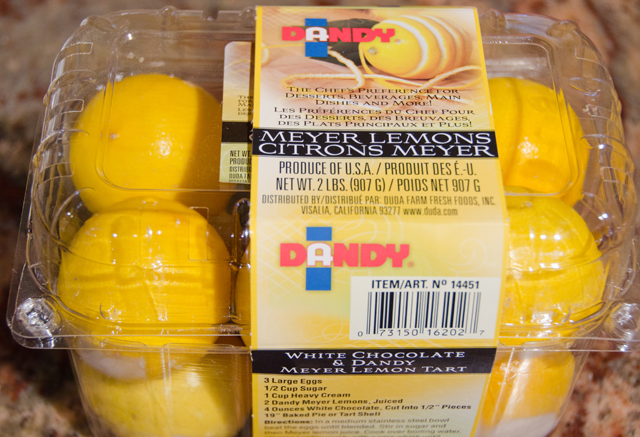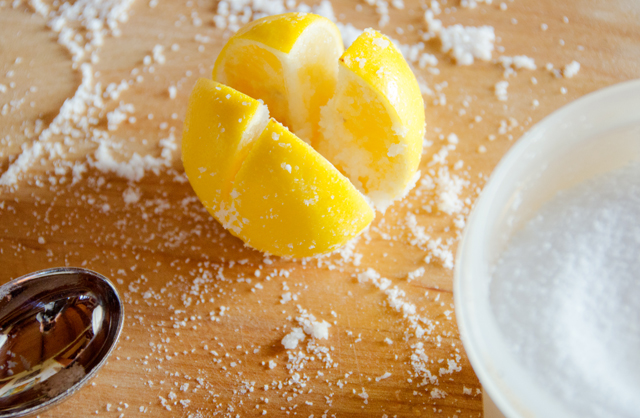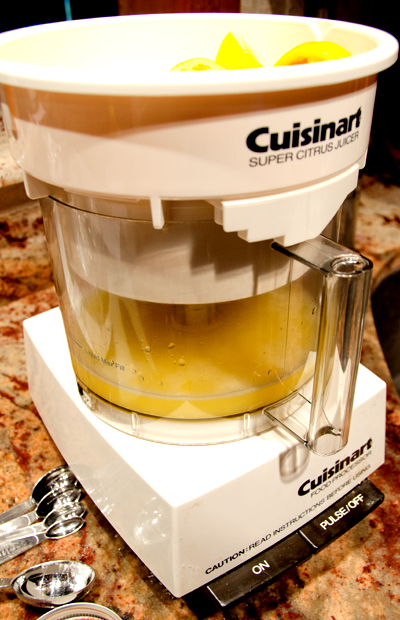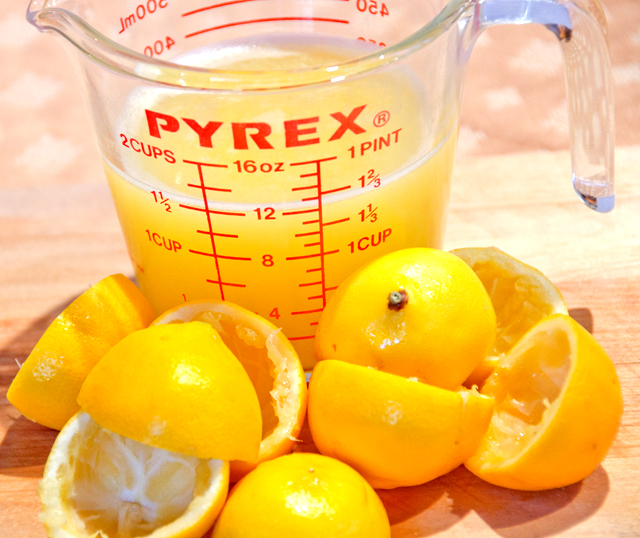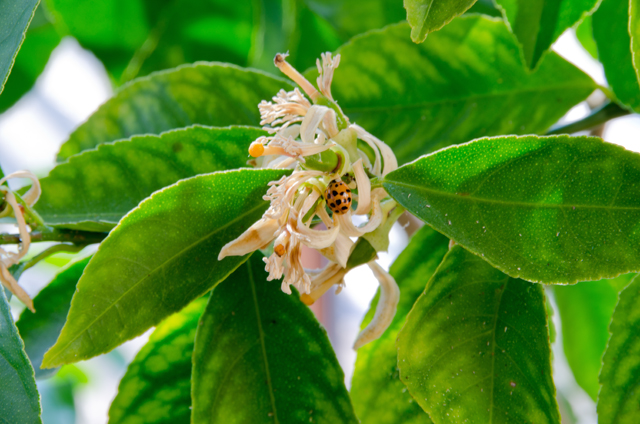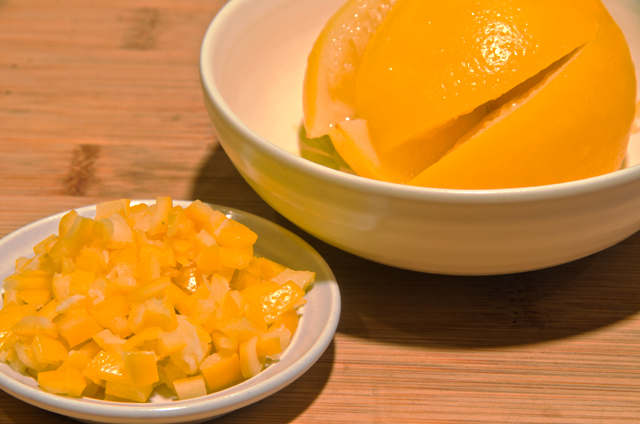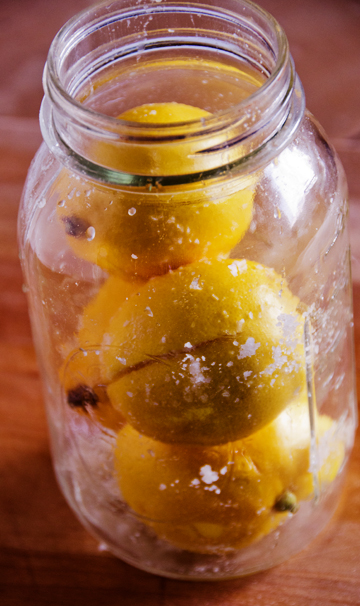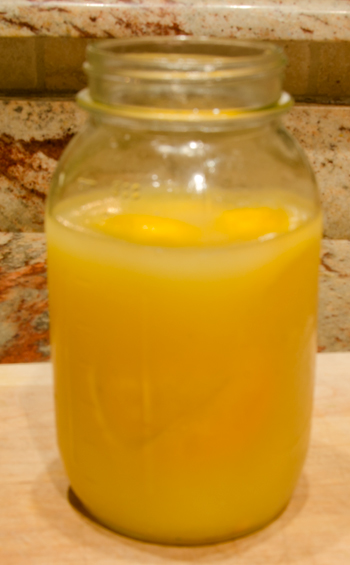One more condiment, really? My husband astutely pointed out that if we emptied all the condiments from our refrigerator we would be left with some eggs, celery and a container of half and half. In our refrigerator you can find four types of mustard, capers, several containers of olives and everything you might need to put together a Thai curry. Some of the condiments were my own home grown homemade treats, a half used jar of pickled jalapenos, some yellow tomato jam and a small jar of homemade nutella. So why one more? A Facebook post from America’s Test Kitchen for preserved lemons caught my eye. I knew that a jar of preserved lemons would be expensive in a gourmet store, but not expensive or time-consuming at all if I made them myself. I decided the little amount of work in the recipe might result in something very interesting.
Preserved or pickled lemons are common in Indian, North African and Moroccan cuisine. Cookbook author Paula Wolfert in her book, Food of Morocco, states that preserved lemons are made with the creme de la creme of Moroccan lemons, the thin-skinned Doqq. The Doqq is not grown in the US but the Meyer lemon is a reasonable substitute. Since the Meyer is actually a cross between a lemon and an orange, they are less acidic and have a thinner rind than the standard supermarket variety lemon, the Eureka.
The lemons are pickled in a brine of lemon juice and salt. The lemons are sliced as if you are cutting them in quarters lengthwise, but not all the way through. Kosher salt is packed in the incisions and the lemons are submerged in a bath of lemon juice. Additional seasonings can be added to the brine such as bay leaves, coriander seeds or cinnamon sticks. It takes very little time to put together, but it takes four to six weeks before the lemons are ready to use. As time goes on, more and more juice will exude from the lemons and the juice will take on a cloudy appearance. Shake the jar every now and then to keep the salt blended well in the liquid. Since they try to bob to the top, no matter how much juice you put in the jar, I cut a double round of parchment paper the size of the top of the jar to keep the lemons submerged in the juice-salt solution.
If I lived on the west coast I would be telling you that I picked these lemons from organically grown trees in our backyard, but I live in Bucks County, Pennsylvania. We have a small Meyer lemon tree that we bought in hopes that it will eventually produce fruit. We enjoy it on the deck in the spring and summer and it winters indoors to escape snow and freezing temperatures. The only thing it has offered us so far are the heavenly aromatic white blossoms that made their appearance several weeks ago. We bought the tree because only a few years ago I found it next to impossible to buy Meyer lemons in local supermarkets. That has changed recently. I bought my Meyer lemons at the local Sams Club. If that is your only option, wash them extremely well, since it is the skin you will ultimately be using.
The sourness of the lemons mellow over time and they develop a unique and exotic flavor profile of tangy citrus and salty. The peel of the lemons can be used in marinades for chicken, lamb or fish. Chopped finely, the peel is an interesting addition to grain based salads like quinoa and couscous. Use it in a gremolata, the classic Italian condiment of garlic, parsley and lemon rind. I use the juice in salad dressings and marinades as well. Feel free to experiment, just remember, a little goes a long way.
Preserved Lemons
from America’s Test Kitchen
Makes One Quart Jar
Ingredients
- 4 Meyer lemons preferably, if not regular lemons will do, scrubbed and dried well
- 1½ cups juice (8 lemons)
- ½ cup kosher salt
- 1 sterilized quart jar with lid
Directions
- Cut each lemon lengthwise into quarters, stopping 1-inch from bottom so lemons stay intact at base.
- Working with 1 lemon at a time, hold lemon over medium bowl and pour 2 tablespoons of salt into cavity of lemon. Gently rub cut surfaces of lemon together, then place in clean 1-quart jar. Repeat with remaining lemons and salt. Add any accumulated salt and juice in bowl to jar.
- Pour lemon juice into jar and press gently to submerge lemons. At this point I cut a double parchment round the size of the mouth of the jar to keep the lemons submerged. Cover jar tightly with lid and shake. Refrigerate lemons, shaking jar once per day for first 4 days to redistribute salt and juice. Let lemons cure in refrigerator until glossy and softened, 4 to 6 weeks. If you used regular lemons, it may take longer to achieve the desired softness. Preserved lemons can be refrigerated for up to 6 months.
- To use, cut off desired amount of preserved lemon. Using knife, remove pulp and white pith from rind. Slice, chop, or mince rind as desired.
